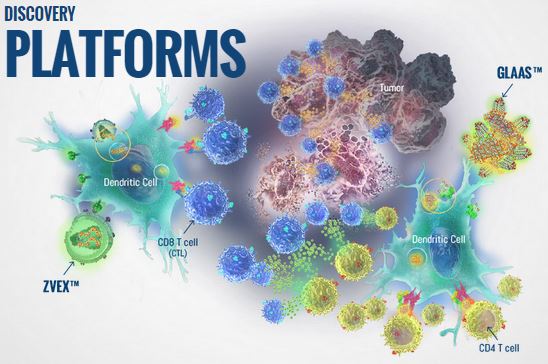Immune Design is the latest immuno-oncology company to file an Initial Public Offering to raise money to advance its platform technology and products. The company has 2 principal approaches to direct the immune system to fight cancer…
ZVEX uses a virus engineered to contain cancer antigen RNA; the virus is taken up by dendritic cells in the skin and the RNA is translated and expressed on MHC Class I molecules to initiate a robust Cytotoxic T-cell response. Specificity to the dendritic cell occurs via binding to its DC-SIGN (CD209) receptor, which recognizes and binds to mannose type carbohydrates, a class of pathogen associated molecular patterns PAMPs commonly found on viruses, bacteria and fungi.
GLAAS works by harnessing the innate immune system to trigger a cross-over cell mediated response from T-helper cells. Glucopyranosyl Lipid A (GLA) binds to the Toll Like Receptor 4 (TLR4) to activate dendritic cells. When GLA is combined with a tumor antigen and injected into a patient, the combination is taken up by the DCs leading the production and expansion of immune cells called CD4 helper T cell. Toll Like Receptors are primitive molecules designed to bind to bacteria and bacterial molecules. GLA is being used as an adjuvant to activate dendritic cells via their TLR receptor so that they more aggressively ingest and present tumor antigens, which are co-administered.
These approaches exploit receptors on dendritic cells in the skin, which are specialized at mounting immune responses against pathogens that breaching the protective barrier of the skin.
So, this company is working to elicit both MHC Class I and MCH Class II expression of tumor antigens to evoke potent immune responses. Several product candidates are in Phase 1 studies using the NY-ESO-1 tumor antigen.


